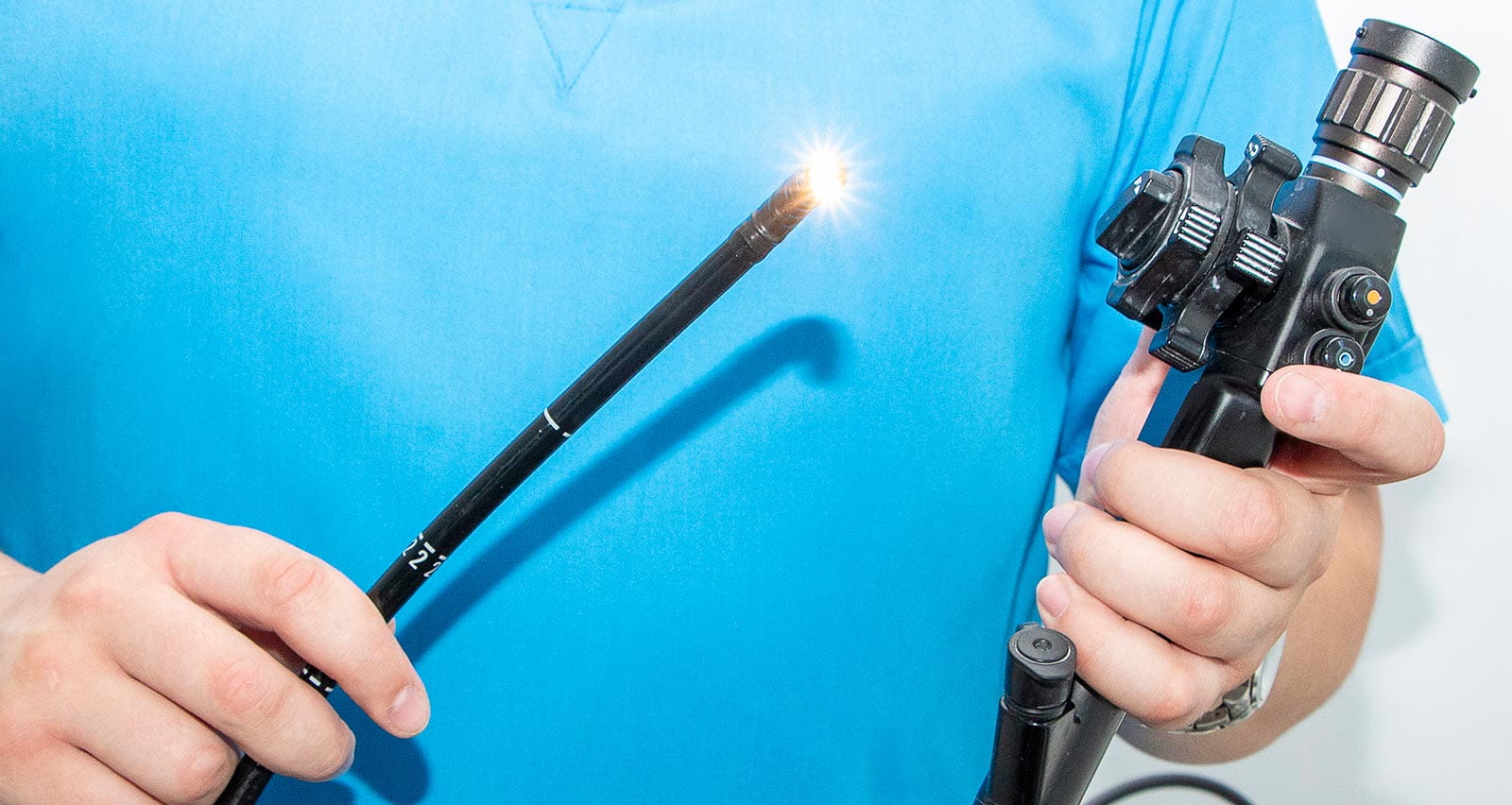
Endoscopy can Detect and Treat Diseases of the Upper GI Tract
Endoscopy is medical procedure that is used to diagnose and treat problems in the upper gastrointestinal tract, including the esophagus (food pipe), stomach and the first portion of the small intestine. It is commonly used to investigate symptoms such as difficulty swallowing, nausea/vomiting, persistent heartburn and bleeding in the upper GI tract.
Your health is important. Get expert care.
If you are experiencing any of the symptoms listed above, call 1-866-UH4-CARE to schedule a consultation with a UH digestive health specialist.
How is an Upper Endoscopy Done?
Upper endoscopy is usually an outpatient procedure and, in some cases, may be done in the doctor’s office. The exam typically takes 15-30 minutes from start to finish but this can vary depending on the individual patient’s situation and overall health. Most patients will be given an IV sedative to relax them and make them more comfortable during the exam and an anesthetic spray may also be used to numb the throat.
With the patient positioned on their back or side, the doctor will insert a long flexible tube called an endoscope into the mouth and slowly move it down through the esophagus, stomach and into the upper small intestine (duodenum). The patient may be asked to swallow as the scope is passed down the throat.
A tiny camera on the tip of the endoscope transmits images to a video monitor, allowing your doctor to see and record any abnormalities in the upper digestive tract. If any areas of concern are found, the doctor may pass special surgical tools through the endoscope to collect tissue samples or remove polyps for further examination in the lab. In addition, the doctor may be able to treat certain conditions found during the procedure. For example, he or she may be able to control bleeding, dilate (open) narrowed areas of the esophagus and tie-off (band) enlarged esophageal veins (varices) that pose a bleeding risk.
Once the exam is completed, the endoscope is slowly pulled out and the patient will be monitored for about an hour as the sedative wears off. Patients are required to have a designated adult drive them home after the procedure and are advised to rest for the rest of the day. After receiving the sedative, reaction times may be delayed for up to 24 hours.
Is Endoscopy Safe?
Endoscopy is a very safe procedure but in rare cases there may be a low risk of bleeding, infection or tearing of the tissues in the upper gastrointestinal tract. You can reduce your risk of complications by carefully following your doctor’s instructions for preparing for an endoscopy.
Results and Diagnosis
An upper GI endoscopy can be used to identify disorders or problems such as:
- GERD (gastroesophageal reflux disease)
- Narrowing of the esophagus
- Barrett’s Esophagus
- Esophageal varices (larger than normal veins in the esophagus)
- Tumors, either cancerous (malignant) or not cancerous (benign)
- Hiatal hernia
- Celiac disease
- Crohn’s disease of the upper GI tract
- Infections, inflammation and ulcers of the upper GI tract
- Swallowing disorders
When you receive the results of your endoscopy will depend on your situation. If, for example, your doctor performed the endoscopy to look for an ulcer, you may learn the findings right after your procedure. If he or she collected a tissue sample (biopsy), you may need to wait a few days to get results from the testing laboratory. Ask your doctor when you can expect the results of your endoscopy.
Your health is important. Get expert care.
To schedule an in-person or virtual consultation with a UH digestive health specialist, call 1-866-UH4-CARE.


